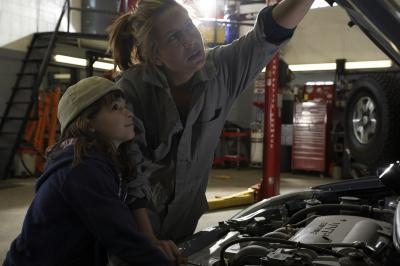
The small- and big-block Chevrolet engines are popular engines which are used in many situations from standard "daily-driver" automotive uses to marine and even off-road competition applications. Camshafts are critical internal components which affect opening and closing points of intake and exhaust valves, and--when selected wisely--can improve the performance of the Chevy engine, whether it be economy, towing, high-performance or all-out racing competition. Choosing a camshaft requires being completely honest about the intended application: a cam designed for high rpm performance will not perform well in a car that is driven daily under low-speed conditions.
Select a camshaft for "daily-driver" operation. For this intended use, a cam that is ground with near factory specifications--but with more exacting design--can improve low rpm torque. Camshafts like these are suitable for usage at low speed such as around-town commuting or normal highway speeds. The maximum engine speed will generally be in the area of the factory camshaft--for example, from idle to 4,500 rpm. Again, modern camshaft designs can use near-factory specs but can improve engine efficiency, thereby improving pulling power and economy.
Choose a camshaft for slightly greater than stock, factory-type performance. Cams in this category are intended for increased power and torque output without sacrificing too much low-speed drive-ability. Identify camshaft specifications with slightly greater lobe lift and duration than stock. For example, the lift may be .030 to .050 inch greater and the lobes may have 10 to 20 degrees more duration than stock. This cam will increase the mid- and high-rpm power slightly at the small expense of low-speed torque and response. These cams are best suited for sports car-type applications.
Select a cam for maximum street performance. These camshafts sacrifice more low-end throttle response and smoothness with the benefit of increased high engine-speed power. A "hot-street" camshaft design will be ground with considerably more lobe lift and duration. For example, this type of camshaft may have net valve lift of more than .100 inch greater than stock and duration as much as 30 to 40 degrees more. In some instances, other modifications to the engine are required to obtain sufficient clearance to avoid piston-to-valve contact, and other valve train components--such as stronger valve springs--may be necessary to ensure reliable operation. Additionally, most applications such as this will require other modifications such as increased compression ratio, improved cylinder heads and induction/exhaust systems, lower rear differential gearing and/or transmission modifications.
Contact a competent race engine machinist for applications in which maximum output is required. A camshaft designed for high output will need to be carefully thought out as all factors and components must work with the others in order for the combination to produce the best results. Cams for competition Chevy engines can sometimes have more than twice the factory lift and as much as 80 to 90 degrees more duration.